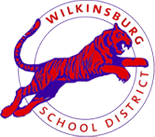English Language Arts (ELA)
The sixth grade ELA curriculum emphasizes close reading, comprehension, and evidence-based writing, with a balance of informational texts and literature. Students learn to analyze texts more deeply, expand vocabulary, and communicate effectively through speaking and writing.
Areas of focus include:
- Reading and analyzing both fiction and nonfiction texts.
- Identifying central ideas, themes, and structures within texts.
- Comparing and contrasting across genres and authors.
- Expanding vocabulary, figurative language, and academic word use.
- Writing for multiple purposes: opinion/argument, informative, narrative, and text-dependent analysis.
- Researching and presenting findings using credible sources.
- Speaking, listening, and presenting effectively in group and formal settings.
Math
Sixth grade math focuses on deepening number sense and extending arithmetic into algebraic thinking. Students also strengthen their problem-solving skills through hands-on applications.
Major areas of focus include:
- Connecting ratio and rate to whole number operations.
- Extending understanding of fractions to rational numbers, including negatives.
- Writing, interpreting, and solving expressions and equations.
- Developing statistical thinking and data analysis.
- Solving real-world problems involving geometry and measurement.
Throughout the year, students also build mathematical habits of mind, such as perseverance, reasoning, modeling, precision, and making use of structure and patterns.
Science
Sixth grade science highlights inquiry, experimentation, and the use of data to draw conclusions. Students explore life, earth, and physical sciences while practicing the steps of the scientific method.
Units of study include:
- Scientific Method & Variables – designing and conducting controlled investigations.
- Earth and Sun – understanding weather, the water cycle, and Earth’s relationship to the Sun and Moon.
- Astronomy – exploring planets, stars, and constellations.
- Data Collection – graphing, analyzing, and making predictions.
Students learn to ask questions, test hypotheses, interpret results, and communicate findings using evidence.
Social Studies
Sixth grade social studies focuses on geography, history, and citizenship, helping students connect past civilizations and societies to their world today.
Key areas of study include:
- Geography – maps, regions, and the interactions between people and environments.
- Ancient History – exploring early civilizations and their contributions.
- Pennsylvania and U.S. History – documents, events, and individuals who shaped the state and nation.
- Economics – goods, services, resources, and decision-making.
- Government & Citizenship – roles, rights, and responsibilities in civic life.
Students also analyze primary and secondary sources, distinguish fact from opinion, and engage in critical reading and writing activities.


